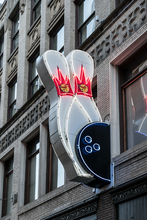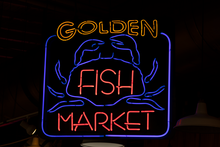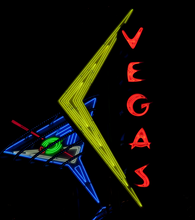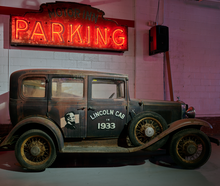Luminous Script Signs: The Origins of the 'Neon Sign'

Luminous script signs, designed and constructed by the National Bureau of Standards (NBS) for display at the 1904 World’s Fair in St. Louis, were one of the earliest public displays of neon sign technology.
New Gases Arrive at NBS
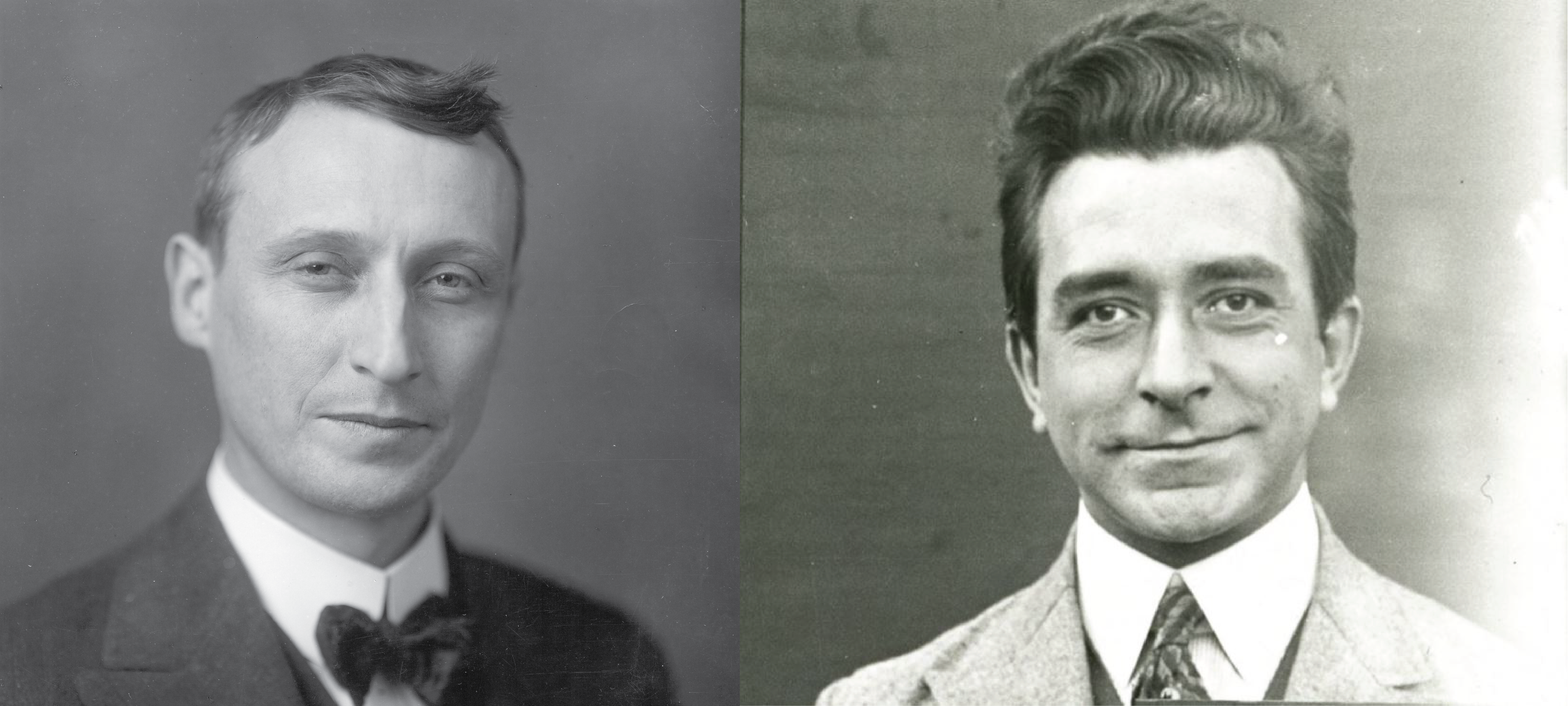
Scottish scientist Sir William Ramsay won the 1904 Nobel Prize in Chemistry for identifying the rare atmospheric gases Neon, Argon, Helium, Krypton, and Xenon. Around the same time Ramsay sent samples of these gases to NBS physicist Perley G. Nutting for spectroscopic study. For his experiments Nutting designed glass electric discharge tubes to hold the gases at low pressure and, when an electric charge was applied, enable the gases to give off a steady, bright, and colored light.
Going Public
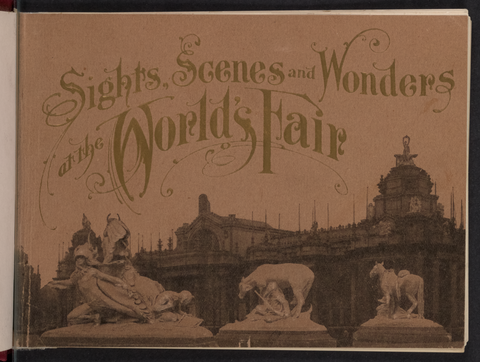
The spectroscopic studies coincided with preparation for an exhibit of NBS research at the 1904 World’s Fair in St. Louis. For the exhibition, NBS instrument maker Edward O. Sperling blew Nutting’s glass tubes into the names of the gases they contained. The public attending the fair were fascinated by the glow of these luminous script signs, and by 1930 the neon tube became commercially available and a whole new industry was founded.
Although NBS may have been the first to display these luminous scripts in 1904, what we now know as the ‘neon sign’ is credited to Georges Claude, a French engineer who invented the neon lamp in 1902, publicly displayed his lamp for the first time at the Paris Motor Show in 1910, and in 1915 acquired U.S. Patent 1,125,476: System of Illuminating by Luminescent Tubes.
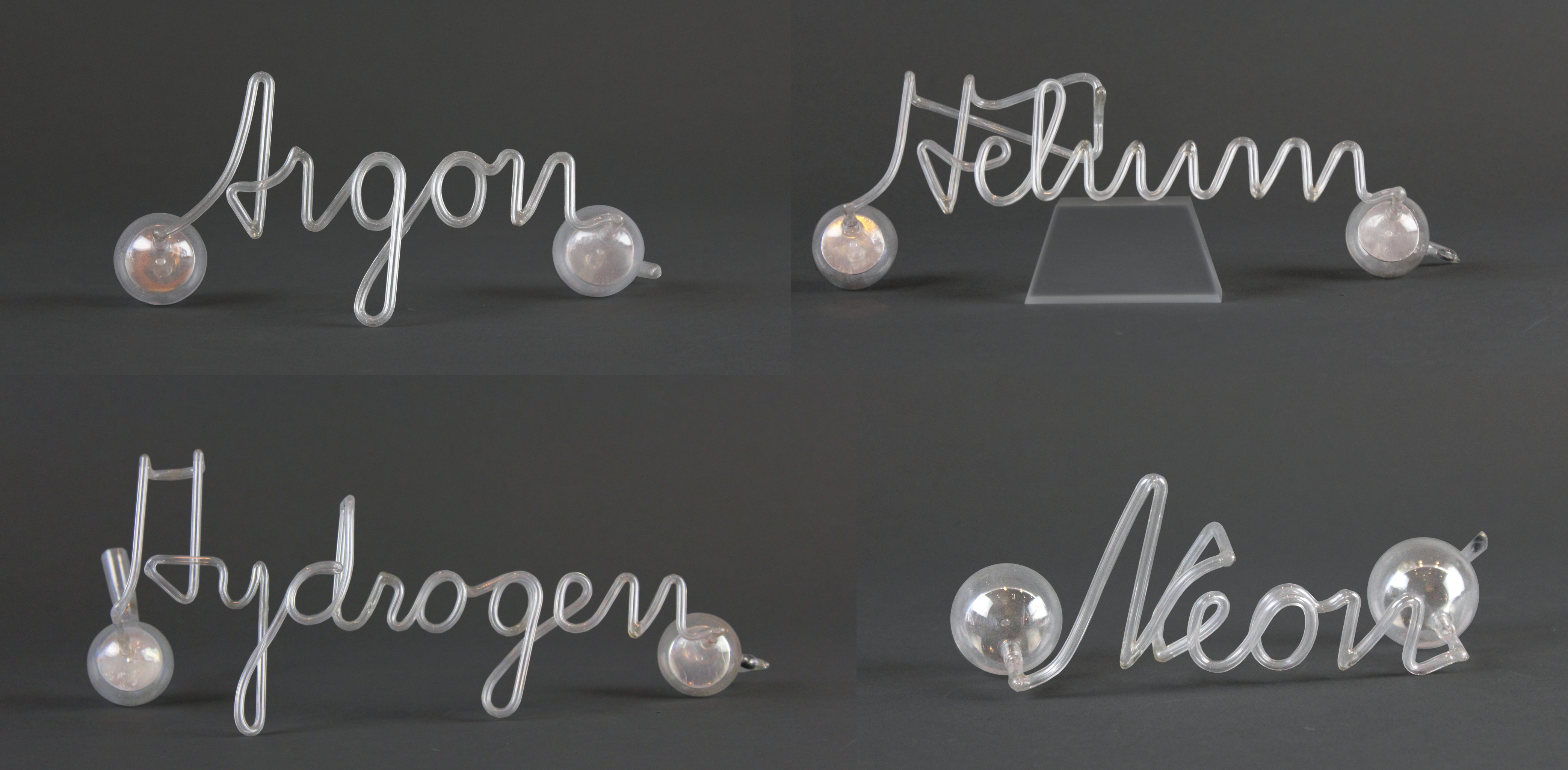
About the Gases and Their Colors
The gases release a specific and characteristic wavelength of photons, which determines the color the gas will shine. When pure, each gas glows a distinct color when an electric charge is applied:
- Argon (Ar): The name is derived from the Greek 'argos', meaning idle. This gas produces a blue color.
- Helium (He): Named from the Greek 'helios,' meaning sun, it produces a pale-yellow hue.
- Hydrogen (H): From the Greek 'hydro' and 'genes', meaning water forming, this gas produces a pink-red color.
- Neon (Ne): From the Greek 'neos', meaning new. Neon gas produces an orange-red color.
Just as a painter combines paint pigments to create a variety of colors, noble gases can be combined to create a wide range of colors.
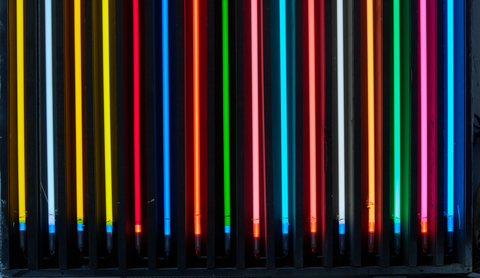
Impact
The neon work was considered NBS’s first notable laboratory accomplishment, and the forerunner of modern neon signs and fluorescent lamps, which are now a multi-billion dollar industry. Today NIST supports the lighting industry through calibration, standardization and research programs in photometry.
NIST Digital Archives Link
Example of how to reference this exhibit:
NIST Museum. 2022. Luminous Script Signs: The Origins of the 'Neon Sign'. Gaithersburg, MD: National Institute of Standards and Technology. Online. https://www.nist.gov/nist-museum/luminous-script-signs-origins-neon-sign
Author. Year. Exhibit Name. Place published: Publisher. Online. URL.


